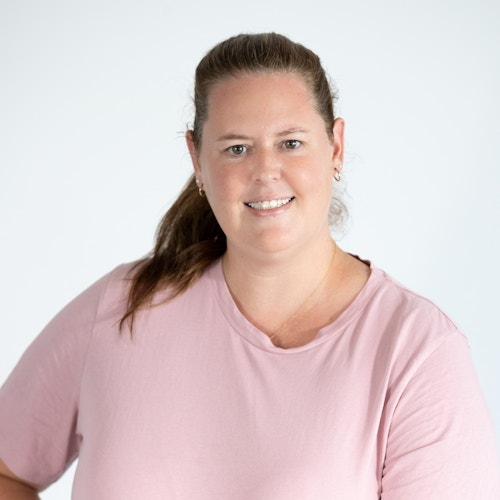

 Words by Ashleigh Howarth
Words by Ashleigh Howarth
Above: Specialist myeloma nurses Natasha Clarke and Megan McDowell.
Moreton Bay residents are being urged to lace up their walking shoes and take part in a charity walk to support Myeloma Australia this weekend.
Participants will enjoy a leisurely 2.8km walk along the foreshore at Woody Point this Sunday as part of Myeloma Australia’s annual fundraiser My Greatest Walk, which is aimed at raising money and awareness for myeloma.
Held annually in March, the walk coincides with International Myeloma Awareness Month.
By taking part in this community event, you will be helping locals like Chrissy Bates, who was diagnosed with multiple myeloma in January 2016 at the age of 53.
Chrissy has been instrumental in raising funds for cancer research and has faced the clippers for the Lose Your Locks for Leukemia fundraiser multiple times to raise money for Leukemia Support Queensland.
Specialist myeloma nurse Megan McDowell, who knows Chrissy well, is hoping to see lots of faces come out and support her and others living with myeloma.
“Moreton Bay has always been a wonderful community for supporting its residents,” Megan says.
“Chrissy is a very active member of several community groups in Woody Point and surrounds.
“What a better way to spend an afternoon than walking by the beautiful seaside while raising awareness or myeloma in Australia and Chrissy, who does so much for the community while battling this little-known cancer.”

What is myeloma
Specialist myeloma nurse Natasha Clarke, who works alongside Megan, says myeloma is a type of blood cancer that can affect up to 2000 people a year.
“Myeloma, also known as multiple myeloma, is a blood cancer arising from plasma cells which are found in the bone marrow,” Natasha says.
“The role of plasma cells is to produce antibodies to infections.
“When abnormal plasma cells become cancerous, they have the ability to damage bone, cause anaemia, increase calcium in the blood, and kidney problems.
“This is a relatively rare cancer with about 2000 cases diagnosed each year, and roughly 20,000 people living with myeloma at any one time.
“At this stage in time there is no cure for myeloma, but people can live with it, on or off treatment for periods of time. That’s why we call is a chronic cancer.
“All cancer diagnoses are scary but because myeloma is generally unheard of and a chronic disease, patients require a lot of information and support to help them manage.”
The median age of onset for myeloma is 70 years, but it can affect adults of all ages, and men slightly more than women.
Myeloma makes up 15 percent of all blood cancers and one percent of all cancers.
Both Natasha and Megan work to support people who have been diagnosed.
“We provide information and support to people in Queensland who are affected by myeloma,” Natasha says.
“We run support groups in Brisbane, the Sunshine Coast, Gold Coast and Redcliffe, as well as hold virtual information and support groups for those who can attend face-to-face groups.
“We try to have one or two seminars a year in regional areas to provide support to people affected by myeloma in those areas.”
They also advocate for better therapies and treatments in Australia.
Details
My Greatest Walk will be held at Woody Point on Sunday, March 3.
The meeting point is the car park on the corner of Hornibrook Esp and Victoria Ave.
Participants will walk to the Woody Point Jetty and return, which is approximately 2.8km.
People can take their dogs, but they must remain on a leash.
Afternoon tea will be served once the walk is completed.
Registering is easy. All you need to do is purchase a registration online from the Myeloma Australia website and encourage your friends and family to sponsor your efforts by starting your own JustGiving page.
Related Stories
Top Stories


